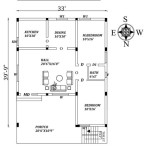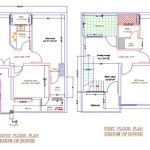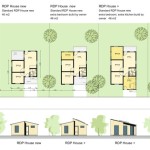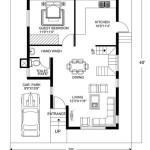Essential Aspects of Off-Grid Tiny Home Plans
Embarking on the journey of creating your own off-grid tiny home demands meticulous planning and consideration of fundamental aspects. These homes, designed for self-sufficiency and freedom from grid reliance, necessitate careful attention to energy production, water sourcing, waste management, and other vital elements. This comprehensive guide will delve into the essential aspects of off-grid tiny home plans, empowering you with the knowledge to craft a haven that aligns with your aspirations for sustainable living.
1. Energy Production
One of the cornerstones of off-grid living is generating electricity independently. Solar power stands as a prime option, harnessing the sun's energy through photovoltaic (PV) panels. These panels convert sunlight into electricity, which can be stored in batteries for use when the sun is not shining. To determine the size of your solar array, consider the appliances you plan to power, the amount of sunlight your location receives, and the desired level of energy independence. Additionally, wind turbines and micro-hydro systems can supplement your energy generation, further reducing reliance on external sources.
2. Water Sourcing and Storage
Access to clean water is paramount in any setting, and off-grid tiny homes require careful planning for water security. Rainwater harvesting is a popular and sustainable method, involving collecting rainwater from the roof of your home. This water can be purified and stored in tanks for various uses. Additionally, digging a well or accessing a nearby water source may be necessary, depending on the local geology and rainfall patterns. Adequate water storage is crucial, ensuring a supply during periods of drought or water scarcity. Consider installing a water filtration system to ensure the quality and safety of your water.
3. Waste Management
Managing waste responsibly is an essential aspect of off-grid living. Composting toilets offer an eco-friendly solution, breaking down waste into nutrient-rich soil amendments. These toilets require minimal water consumption, making them ideal for off-grid settings. For solid waste, consider implementing a composting system or partnering with a local waste management service. Proper waste disposal will not only maintain a hygienic environment but also reduce your impact on the surrounding ecosystem.
4. Heating and Cooling
Depending on your climate, heating and cooling your off-grid tiny home may require specific considerations. Passive design principles, such as strategic window placement and insulation, can minimize the need for active heating and cooling systems. Wood stoves, fueled by sustainable wood sources, provide a cozy and efficient way to heat your home during colder months. For cooling, consider evaporative coolers or natural ventilation techniques. These methods leverage the power of airflow and evaporation to keep your home comfortable without relying on electricity-driven systems.
5. Appliances and Lighting
Choosing energy-efficient appliances is crucial for off-grid living. Look for appliances with Energy Star ratings, ensuring they consume less energy while maintaining functionality. LED lighting is another excellent choice, providing bright and efficient illumination compared to traditional incandescent bulbs. Additionally, consider incorporating natural lighting by installing ample windows and skylights. Designing your tiny home with energy efficiency in mind will significantly reduce your energy consumption and extend the autonomy of your off-grid system.
6. Safety and Security
Living off the grid requires special attention to safety and security. Ensure your home is well-lit, especially around entry points. Consider installing a security system or partnering with a local security service to monitor your property. Additionally, having a plan in place for emergencies, including a communication system and a designated evacuation route, is vital. Safety should be a top priority in any tiny home, but it becomes even more critical in off-grid settings.
7. Land Acquisition and Legal Compliance
Before embarking on your off-grid tiny home journey, it is essential to secure a suitable piece of land. Research zoning laws and building codes in your desired location to ensure that your plans align with local regulations. Consider purchasing land with access to water sources, sunlight for energy generation, and a favorable topography. Respecting the land and adhering to legal requirements will ensure a smooth and compliant building process for your off-grid home.
Conclusion
Creating an off-grid tiny home involves thoughtful planning and a deep understanding of essential aspects that foster self-sufficiency. By carefully considering energy production, water sourcing, waste management, heating and cooling, appliances and lighting, safety and security, and land acquisition, you can craft a sustainable haven that aligns with your vision of off-grid living. Embrace the challenges and the boundless opportunities that an off-grid tiny home offers, and experience the freedom and self-reliance that comes with living in harmony with the natural world.

Tiny Eco House Plans Off The Grid Sustainable Houses

The Off Grid Cabin Floor Plan Small Living In Style

10k Diy Off Grid Solar Tiny House

Off Grid Archives Small Wooden House Plans Micro Cabin Garden Shed Cottage Blueprints
:max_bytes(150000):strip_icc()/Off-the-grid-tiny-house-building-plans-via-smallspaces.about.com-56a889393df78cf7729e9fc1.jpg?strip=all)
You Can Build This Tiny House For Less Than 2 000

Misty S 400 Sq Ft 16x25 Solar Off Grid Small House

Wanna Get Away 10 Tiny House Plans For Off Grid Living Dfd Blog

Wanna Get Away 10 Tiny House Plans For Off Grid Living Dfd Blog

Perfect Floor Plan This 20ft X 24ft Off Grid Cabin Is Perfection

Off Grid House Plans Bing Images Home Design








